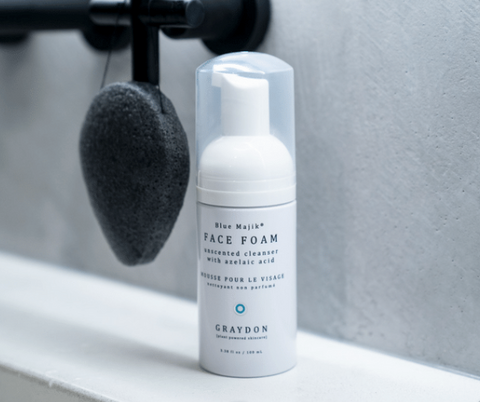As the name suggests, white willow bark extract comes from the bark of the white willow—a tree that can grow up to 30 metres (98 feet) tall and is native to Europe as well as western and central Asia. The bark of this beautiful tree has been used medicinally for thousands of years to reduce pain, fever and inflammation. In 1828, the active component in willow bark was discovered and named salicin.(1)
Other names: Salix Alba bark extract
What it is: anti-inflammatory, exfoliating
You can find it in: Face Foam
*These descriptions reflect the qualities of the raw ingredient.
After centuries of use in medicine, the topical effects of white willow bark extract were studied. In 2010, scientists wanted to determine if the salicin in white willow bark extract had anti-aging skin benefits
If salicin sounds familiar, it’s probably because you’ve heard of salicylic acid. This popular Beta Hydroxy Acid (BHA) works to exfoliate the skin, unclog pores and regulate sebum production. Salicylic acid can be a great choice for those with oily and acne-prone skin.
Sounds great, right? Well there are a couple things you should know. Not everyone can tolerate salicylic acid. This ingredient can be quite drying and may cause irritation. In addition, salicylic acid used in skincare formulations is often synthetic.
That’s why chose to use white willow bark extract instead of salicylic acid.
The benefits of white willow bark extract
After centuries of use in medicine, the topical effects of white willow bark extract were studied. In 2010, scientists wanted to determine if the salicin in white willow bark extract had anti-aging skin benefits.
A small group of participants between the ages of 35 and 70 applied a serum containing 0.5% salicin to their faces twice a day for 12 weeks. Improvements in wrinkles, texture, pore size and radiance were noted after the first week. Significant improvements to the skin’s appearance were measured after the full 12 weeks.(2)
In addition to salicin, white willow bark also contains tannins and flavinoids that provide anti-inflammatory properties. Research showed that a 10% mixture of willow bark was better at reducing inflammation and was less irritating than a 1% mixture of salicylic acid.(3)
Who should use white willow bark extract?
Give this ingredient a try if you're looking to soothe inflamed skin that’s prone to redness. If you want to add a mild exfoliant to your skincare routine and get your glow game on, then this ingredient is also a great option for you. Regardless of your skin type, your skin will definitely appreciate a little gentle exfoliation!
White willow bark extract in Graydon Skincare products
Our Face Foam cleanser is formulated with white willow bark extract to cleanse and smooth the skin. This fragrance-free cleanser also contains azelaic acid to brighten the complexion and apple cider vinegar to balance the skin’s pH level. Perfect for combination skin and suitable for sensitive skin, Face Foam gently removes dirt, sweat and sebum. Pair Face Foam with our Bamboo Charcoal Sponge for an even deeper clean.
Summary
- White willow bark extract is a gentle alternative to salicylic acid.
- White willow bark extract soothes inflammation and improves skin radiance.
- White willow bark gently exfoliates the skin and improves skin texture.
- White willow bark extract is suitable for those with sensitive skin.
- Find white willow bark extract in Face Foam cleanser.




